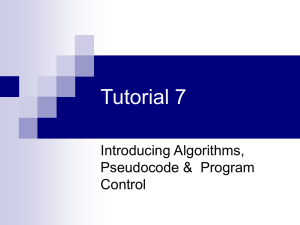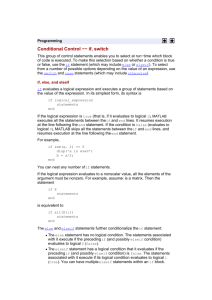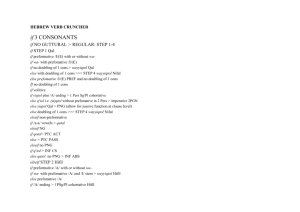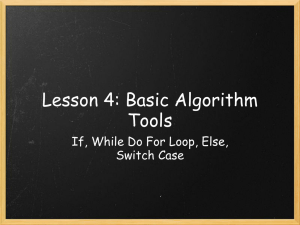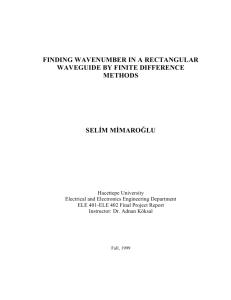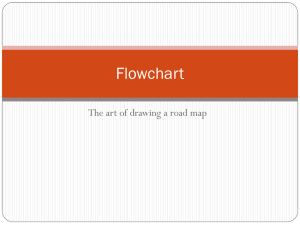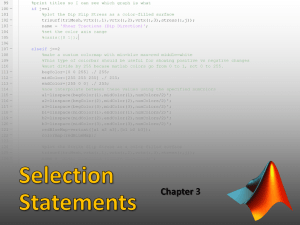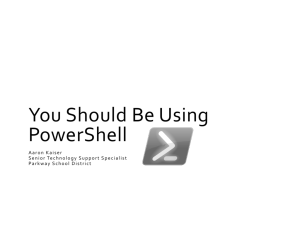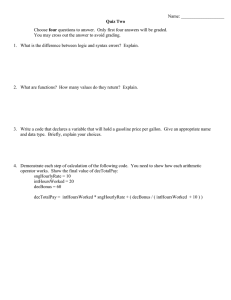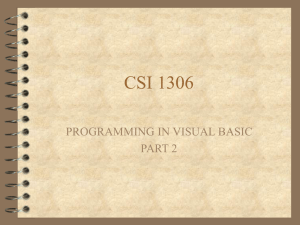5.04a - Decision Making Structures
advertisement
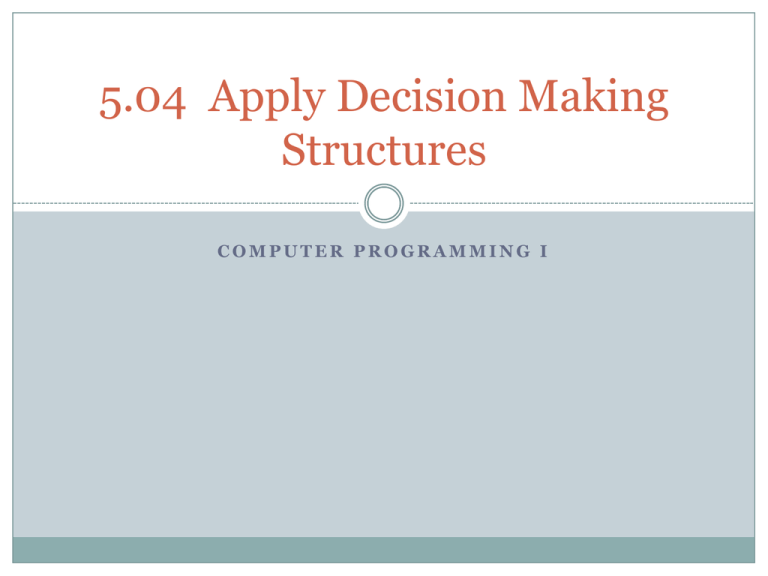
5.04 Apply Decision Making Structures COMPUTER PROGRAMMING I Objective/Essential Standard Essential Standard: 5.00- Apply Programming and Conditional Logic Indicator: 5.04 Apply decision-making structures. (3%) What is a decision? Decisions are made by humans hundreds of times a day. Computers can make simple decisions also. What are some decisions you made today so far? Boolean Logic Remember, from the previous section Boolean logic? (Ex: intNum = 5) Computers use it to make decisions! There are only two answers: TRUE or FALSE Computers do not know about Maybe! The If Decision Structure Decisions… Decisions So when you got up this morning what did you do? This is a decision. Let’s put it in computer terms. IF the sun is out then I will walk to school The If…Then Statement If…Then is a decision structure that executes a set of statements when a condition is true. Form: T If condition Then Statements End If The If…Then Statement IF the sun is out (question) THEN I will walk to school. Remember the computer uses Boolean logic (T/F). So either the sun is out (true) or ANY other state (false). No maybes or in-betweens. When the question is True, the statements after THEN (and down to ENDIF) execute. They are skipped if the question is False. IF..THEN..ELSE Statement In Visual Studio we use the IF..THEN..ELSE statement to tell the computer we want it to make a decision. For example T F If a = b then c= 10 Else c=13 End If Use of the ELSE Else is optional- if omitted and the “question” is false no action is taken. If ELSE is used, the statements after the ELSE will execute if the “question” is NOT true (Boolean FALSE) Nested If…Then…Else Statements If…Then…Else statement within an If…Then…Else statement is called Nested. Example: T F If intNum = 10 Then Me. lblMsg.text = “Ten” Else If IntNum > 10 Then Me.lblMsg.text = “More than 10” T Else Me. lblMsg.text = “Less than 10” F End If End If The If…Then…ElseIf Statement An IF statement can have multiple else statements- each one a new question or condition to check. Also called an ElseIf Ladder The computer executes the statements below the first (or only) true condition and immediately exits the whole statement (ignores anything below the true statements). The If…Then…ElseIf Statement Used to decide among three or more actions Form: If condition Then Statements ElseIf condition Then Statements ElseIf condition Then Statements … Else Statements End If Last Else clause is optional – executes when no True above. If…Then…ElseIf Example If a = b Then c = 10 ElseIf a > b Then c = 14 ElseIf a < b Then c = 16 Else c = 12 End If If…Then…ElseIf Example #2 If strStudentClass = “Senior” Then lbl.Answer.Text = “Seniors - start 1 hour late Fri” ElseIf strStudentClass = “Junior” Then lbl.Answer.Text = “Juniors - start 30 min late Fri” ElseIf strStudentClass = “Sophomore” Then lbl.Answer.Text = “Sophomores - start on time Fri” ElseIf strStudentClass = “Freshman” Then lbl.Answer.Text = “Freshmen - start 15 min early Fri” End If The Select Decision Structure Select Case Decision Another way to make a decision is a select case statement. This statement is used instead of multiple else if statements. The computer again executes the first (or only) true statement and ignores the rest of the statement. Select Case Decision Decision structure that uses the result of an expression to determine which block of code to execute. Form Example Select Case expression Select Case intScore Case value Case 0,10 Statements Statements … … Case Else Case Else Statements Statements End Select End Case Select Case Expression must evaluate to a built-in data type. Integer, Double, Character, String… There can be multiple Case clauses. Case Else clause is optional Value type should match the expression type a single value, a list separated by commas, or Case 2 Case 1, 2, 3 a range separated by the keyword To. Case 1 To 5 and can be Case Is Compares the result of an expression to a range of values when a relational operator is part of the value. Must use Case Is with relational operators. Example: Case Is < 10 Select Case Example Select Case intGrades Case 100 strGrade= “A+” Case 90 To 99 strGrade= “A” Case 80 To 89 strGrade=“B” Case 70 To 79 strGrade=“C” Case 60 To 69 strGrade=“D” Case Is < 60 strGrade=“F” Else Messagebox.show(“Please input a valid number!”) End Select If..Then vs. Select Case In most cases If..Then is good for a single decision and a Select Case (or If Elseif) is correct to use when there are multiple possible answers with only one correct answer. In the following example, remember the .Checked property of a radiobutton holds the values True or False! A statement such as AddMachine() is a block of code called a Function/Method that runs when its name is executed (like the Convert.ToDouble(..) Function). We will be writing them soon! Which Radio Button is Clicked? Select Case True Case radAdd.Checked AddMachine() Case radMultiply.Checked MultipleMachine() Case radDivision.Checked DivisionMachine() Case Else Messagebox.Show(“Pick a button!”) End Select Sample Program Write a program that allows the user to input a number. The computer should tell the user if that number is smaller, greater or equal to 15. Sample Program Solution Private Sub btnSubmit_Click(ByVal sender As System.Object, ByVal e As System.EventArgs) Handles btnSubmit.Click Dim number As Integer Try number = Convert.ToInt32(txtNumber.Text) If number = 15 Then MessageBox.Show("The number is 15") ElseIf number < 15 Then MessageBox.Show("The number is less than 15") ElseIf number > 15 Then MessageBox.Show("The number is greater than 15") End If Catch ex As Exception MessageBox.Show(“Enter a numeric value”) End Try End Sub
